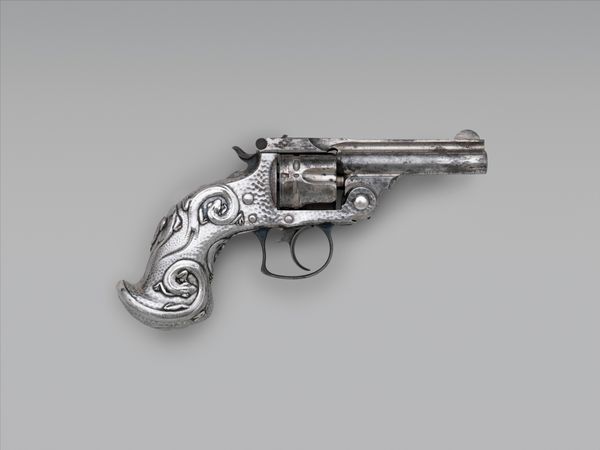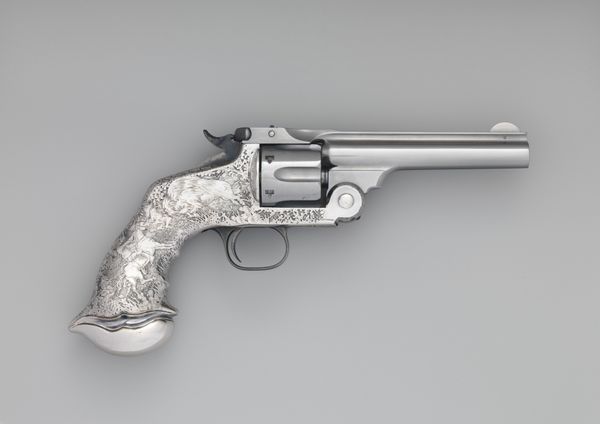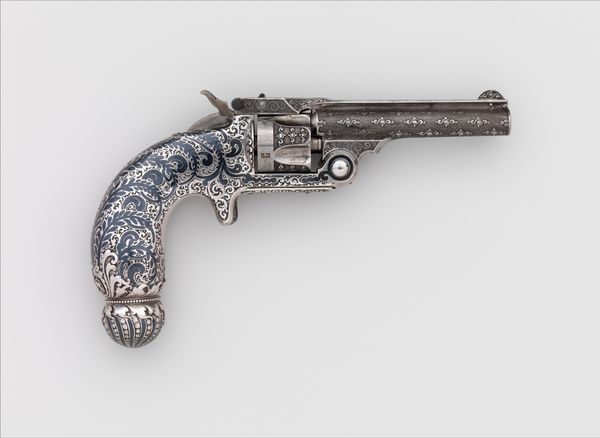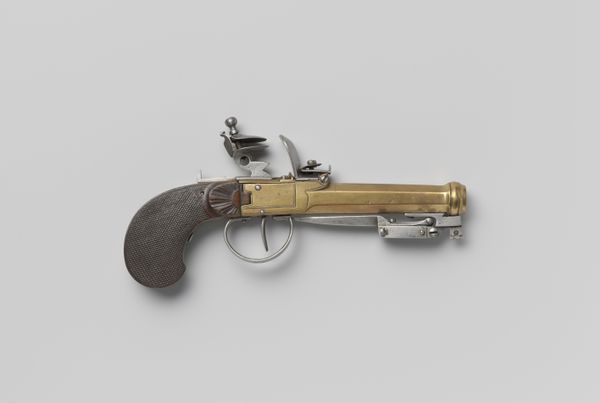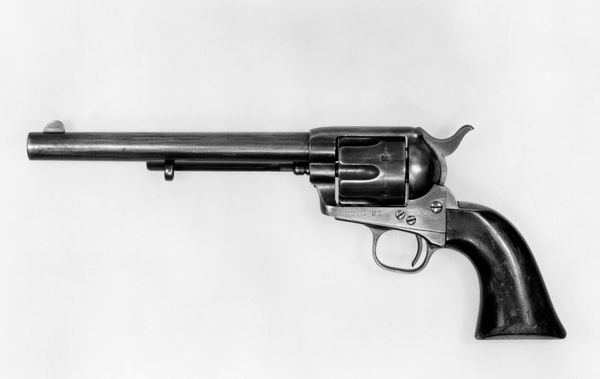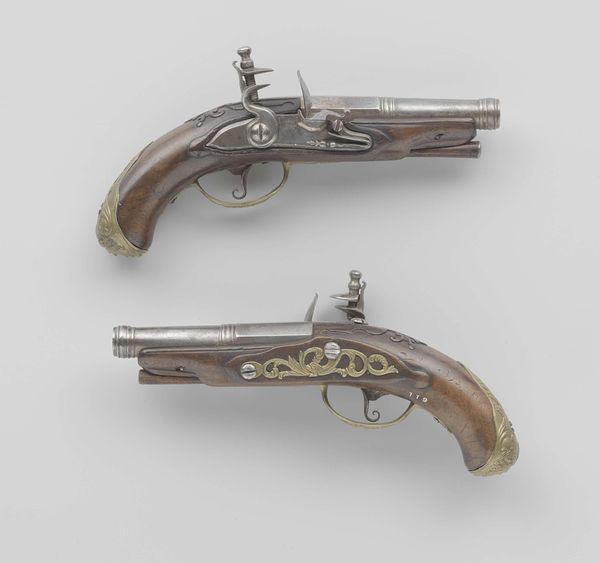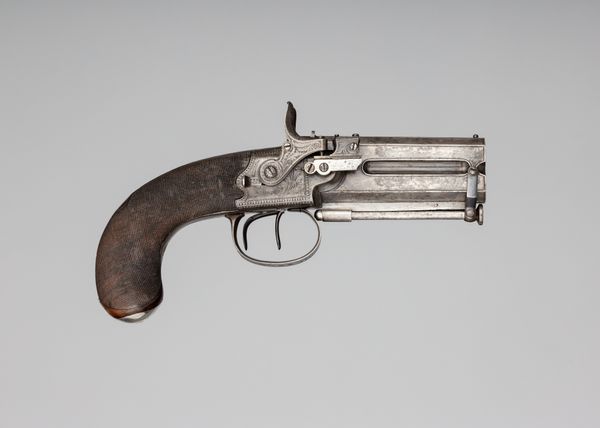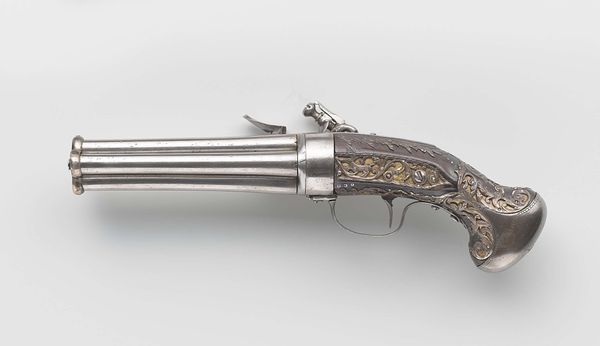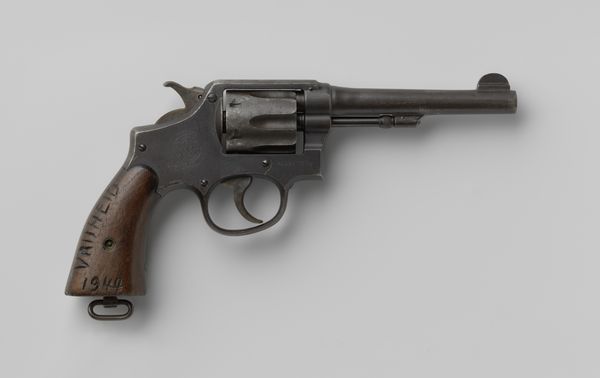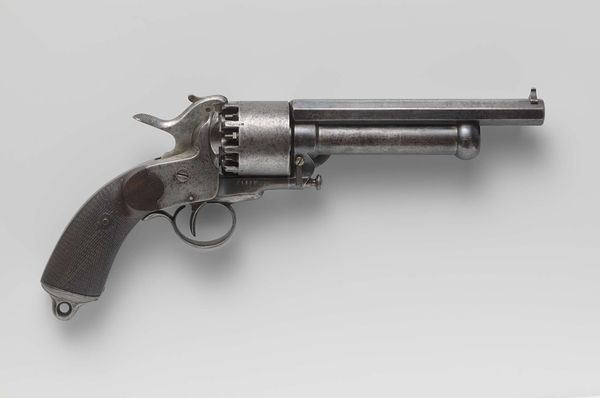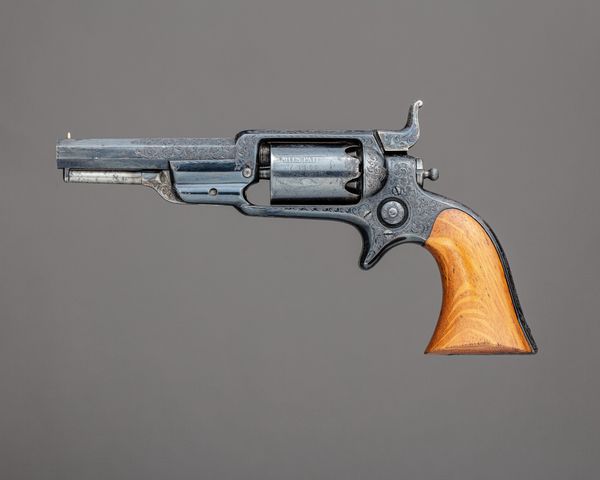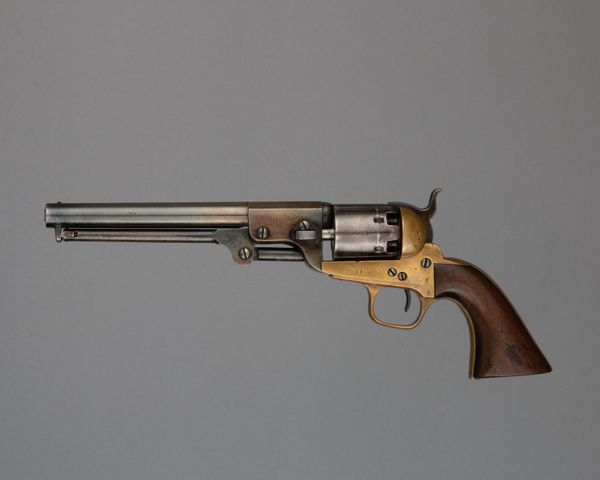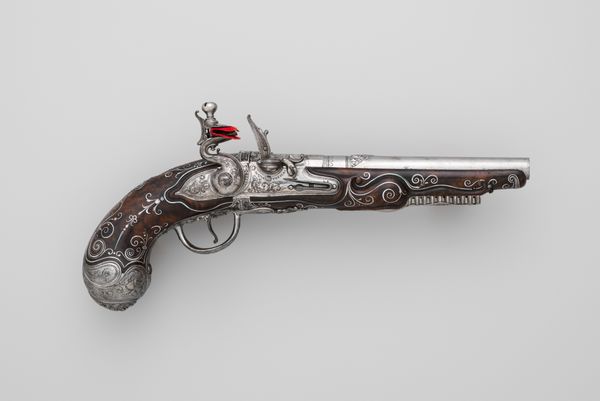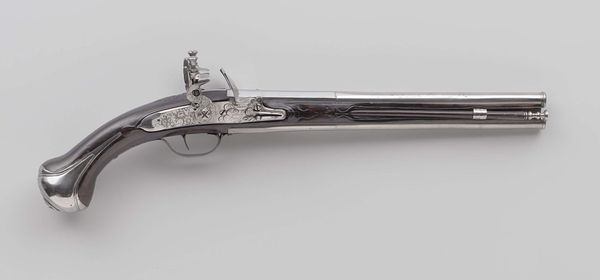
Smith and Wesson .32 Caliber Single-Action Revolver, serial no. 17156 1881 - 1902
0:00
0:00
print, metal, photography
#
still-life-photography
# print
#
metal
#
photography
#
united-states
#
armor
#
arm
Dimensions: L. 7 in. (17.8 cm); L. of barrel 3 in. (7.6 cm); Cal. .32 in. (8.1 mm); Wt. 15 oz. (438 g)
Copyright: Public Domain
Curator: Isn't she lovely? We are currently looking at an ornate, late 19th-century, Smith & Wesson .32 Caliber Single-Action Revolver from somewhere between 1881 and 1902. It’s part of the Met's collection here in New York. Editor: It is startling how decorative it is. I see what appears to be meticulous chasing or engraving on the grip, something more akin to fine jewelry than a firearm. Curator: Exactly. It almost whispers paradox, doesn't it? The deadly made dazzling. I'm reminded of delicate blooms concealing sharp thorns. Editor: Ornate metalwork on weapons speaks volumes about status, consumption, and artistry intersecting with utility and brutality. One could almost miss that the grip may not be original. Curator: Tell me more! Editor: Considering Smith and Wesson focused on function and the rise of mail-order modifications in the era, some collectors might believe the grip embellishments were custom commissioned by a wealthy owner. It adds another layer of class performance to the object's complex identity. Curator: A gilded cage for destruction. Makes me wonder about the owner, the artisan... about all the hidden hands that shaped this narrative of beauty and destruction. Did the engraver grapple with what the gun symbolized? Editor: An interesting thought! Given the repetitive nature of factory engraving—the economics of scale at play—it might not have occurred to them at all. Still, by contemplating the aesthetics of these firearms, aren't we wrestling with the implications and effects of craft on commerce and conflict? Curator: True. I guess seeing this exquisite violence encased in metalwork... It evokes a sense of morbid fascination, but there’s undeniable craftsmanship on display too, blurring lines. Editor: Perhaps that blurring of lines IS the story: challenging our relationship to objects, manufacture, and violence in plain sight. Curator: What a beautifully unsettling testament. Thanks for making me see that with fresh eyes.
Comments
No comments
Be the first to comment and join the conversation on the ultimate creative platform.
